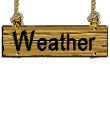Topping Trees ~ Don't Do It !!!
 Who We Are
Who We Are
Who we are, how much we know, and why we claim to be "A Cut Above the Rest" can be found in this section of our site.
Our business license and other legal requirements to serve in the tree service industry, along with our insurance coverage information can also be accessed here.
 What We Do
What We Do
From the very small to the very large, no job is too big or too small, and estimates are always free, so browse around the Our Services section of our website to see the services we offer, find out what best fits your needs, and even learn a little bit about what we do....
 Severe Weather & More
Severe Weather & More
Find out what to do after a severe storm hits your home or business, read about insurance laws and procedures, and even check your local forecast in this section.![]()
It is very important to have a regular maintenance system in place before the storm season arrives. Keeping your trees properly trimmed regularly, reduces the potential for damage to the tree itself and prevents flying limbs from falling or becoming projectiles.
Now Accepting All Forms of Payment
Stubbing, Dehorning, Pollarding, Heading, Lowering the Cap,
and many other euphemisms are often used to refer to, what is best described as the decapitation of trees.

Topping is the pruning of large upright branches between twig nodes to reduce the height of a tree, sometimes almost to the top of the trunk. Tipping is the practice of cutting lateral branches between nodes to reduce crown width.
Topping and tipping is unfortunately a common practice among many tree service companies and is often used as a less expensive alternative to a full removal. It is done not with an eye to what is best for the tree, but because the homeowner is in a pinch. Some types of trees may die after topping, but this fact often holds little importance to the homeowner, who may actually be glad to have the tree die if it is unwanted. More often than not however, people are just misinformed or unaware of the harm that comes with topping trees. This page was created to inform people of the dangers of topping trees and to clear up a few misconceptions.

Topping Is Not Cheaper
On the contrary, topping a tree is actually, in the long run, more expensive. Topping reduces the appraised value of your tree. A tree, like any landscape amenity, adds to the value of your property and appraisers subtract hundreds of dollars from the value of a tree once its been topped. (using the International Society of Arboriculture's guidelines for evaluation)

![]()

A topped tree must be done and re-done every few years-and eventually must be removed when it dies or the owner gives up. Each time a branch is cut, numerous long, skinny young shoots (called suckers, epitomic or water-sprouts) grow rapidly back to replace it. They must be cut and recut, but they always regrow the next year.

Topping Does Not Improve The Look of The Tree or The Landscape
|
The sight of a topped tree is offensive to many people. The freshly sawed-off tree limbs are reminiscent of arm or leg amputations. And the freshly-sawed look is just the beginning of the eyesore; the worst is yet to come, as the tree regrows a witch's broom of ugly, straight suckers and sprouts. Topping destroys the winter silhouette of a tree. The regrowth of suckers or shoots will bloom poorly, if at all.
The natural beauty of the tree's crown is a function of the uninterrupted taper from the trunk to ever finer and more delicate branches, and the regular division of the branches. Arborists consider the topping of some trees a criminal act, since a tree's 90-year achievement of natural beauty can be destroyed in a couple of hours.
Topping Does Not Make the Tree Safer
Ironically, many people top their trees because they think it will make them safer. Topping, in fact, creates dangerous and potentially hazardous trees.
In many cities throughout the US, topping is banned because of the public safety factor and the potential for lawsuits.
 |
With tipping, the new limbs, made from the sucker or shoot re-growth, are weakly attached and break easily from wind or snow.
After topping, the thick re-growth of suckers or sprouts resulting from topping make the tree top-heavy and more likely to catch the wind. This increases the chance of it breaking or being blown down in a storm.
Topping Will Not Keep Trees Small
Many homeowners often feel that their trees have become too large for their property, fearing that very tall trees pose a hazard. Topping will not work to keep trees small.
After a deciduous tree is topped, instead of slowing down, its growth rate actually increases. It grows back rapidly in an attempt to replace its missing foliage and will continue growing at an increased rate until it reaches the same size it was before it was topped.
Topping invariably results in the development of fast growing, small, very weak branches called epicormic sprouts - or in the death of the cut branch back to the next lateral branch below. It takes (at maximum) a couple of years before your tree returns to near its original size, and once it catches up it is much weaker and susceptible to breakage.
|
Tipping opens the tree up to an invasion of rotting organisms. A tree can defend itself from rot when side branches are removed, but it has a hard time walling off the pervasive rot to which a tipping cut subjects it.
Topping damages a tree's health so that it no longer has the strength to re-establish itself. In fact, it is essentially dying and will continue on a downward spiral for years.
You cannot slow a tree from growing large by topping it.
In fact....
if you succeed, you have killed it.
Topping and Tipping Kills Trees !

|
Some tree species (e.g., sugar maple. oak and beech) do not readily produce water sprouts. Without the resulting foliage, a bare trunk results and the tree quickly dies.
The intact root system of a topped tree continues to provide water and minerals at the level previously required by the whole crown. This stimulates the excessive growth of new shoots, often forcing them to grow rapidly which can result in long, thin, brittle branches. The root system depends on leaves or storage reserves for its energy supply. Topping not only eliminates much of the foliage, it prevents the roots from obtaining stored food. The rapid branch growth following topping depletes the remaining reserves. This weakens the root system, increasing its susceptibility to rot and accelerating the overall decline of the tree.

When hiring a tree service to trim up a tree that has become too large, or trim off limbs that are hanging threateningly over your home - make sure they have absolutely no intentions of topping your tree. This practice harms trees and should never be suggested or recommended as a pruning or trimming option. Topping, in any circumstance, is a highly disreputable procedure and Kelly’s Cutting Edge LLC will not practice it. If problems caused by a tree cannot be solved through acceptable pruning, we will recommend the tree be removed.
About Us
Severe Weather
Site Map
Looking for something specific?
This page should get you where you need to go.










